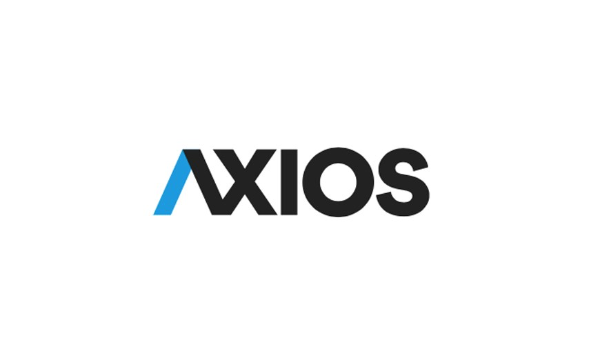The House Budget Committee voted along party lines Thursday evening to approve a fiscal framework that inches Republicans closer to their prized “big, beautiful” reconciliation bill that would increase military and border security spending while cutting taxes and slashing domestic and social programs.
House leadership struck a deal with the House Freedom Caucus tying tax provisions more closely to spending targets to bring on board holdout Reps. Chip Roy, R-Texas, and Ralph Norman, R-S.C. The two voted to approve the fiscal 2025 budget resolution after calling for further assurances that the House would pursue aggressive spending cuts, and in Roy’s case roll back clean energy tax incentives.
The 21-16 vote paves the way for the House to take up the resolution on the floor, as Republicans in that chamber race to keep up with the Senate’s plans to pursue a slimmer $345 billion reconciliation bill that would leave the tax debate until later in the year. The Senate could take up its competing fiscal 2025 budget as soon as next week on the floor.
“This budget resolution is more than numbers on a ledger, it’s a blueprint for restoring America’s security, prosperity, and leadership in the world,” House Budget Chairman Jodey C. Arrington, R-Texas, said.
Adopting the same budget resolution in both chambers is the necessary first step to writing a reconciliation bill, which includes submissions from various authorizing committees. If they meet the deficit targets laid out in the resolution’s instructions, the reconciliation bill is afforded procedural protections in the Senate, including the ability to pass with a simple majority.
That’s critical for Republicans to be able to enact their fiscal agenda, which isn’t expected to attract much if any Democratic support.
And it’s far from clear that House Republicans will be unified once the budget resolution hits the floor, even after Freedom Caucus members signed on. Other conservatives have expressed concern about raising the debt limit by $4 trillion, as the resolution would allow, while centrists in the party were already chafing at the proposal’s spending cuts even before changes beefing those up.
Much of the committee’s debate focused on who would be hurt or helped by the reconciliation bill that adoption of the resolution would enable.
The committee overcame opposition from Democrats, who decried the resolution as clearing the way for cuts to programs supporting the poor to extend tax cuts they said would benefit the wealthy, while adding to the national debt. Republicans rejected dozens of amendments offered by Democrats that would have eliminated or modified reconciliation instructions.
“Let’s be clear. This plan is a Republican betrayal of the middle class. It does not support hardworking Americans, it undermines them,” Ranking member Brendan F. Boyle, D-Pa., said. “Instead of investing in working families, House Republicans have crafted a plan that takes from working Americans to give to their billionaire donors.”
Freedom Caucus deal
A deal leadership cut with the House Freedom Caucus allowed Budget Republicans to approve the resolution along party lines, securing the votes of fiscal hardliners Roy and Norman.
The committee adopted an amendment from the panel’s vice chair, Lloyd K. Smucker, R-Pa., updating the resolution to reflect concessions made to bring Roy and Norman on board by tying the size of the eventual tax-cut package to the amount of spending cuts ultimately achieved.
The underlying text would allow the Ways and Means Committee to draft reconciliation recommendations increasing the deficit by up to $4.5 trillion over a decade, mainly to extend the 2017 tax cuts expiring at the end of the year. The amendment says that tax writers can only have that much fiscal space if other committees achieve at least $2 trillion in spending cuts.
The amended resolution would cut into the $4.5 trillion Ways and Means allotment by a dollar for every dollar Republicans fall short of that $2 trillion target. Previously, that language was in a nonbinding “policy statement” rather than required under the resolution.
The resolution instructs committees to come up with at least $1.5 trillion in spending cuts — which has already given some moderates pause. But the amended language means if that’s all the others committees come up with, then the Ways and Means instruction is reduced to $4 trillion, for example.
The amendment would also allow Republicans to give Ways and Means additional leeway to increase the deficit by a dollar for every dollar the spending cuts surpass $2 trillion.
Smucker said the amendment would give committees some flexibility to achieve greater cuts but doesn’t lock them in, in case they find later that they can’t meet the higher target.
Democrats said it would result in even deeper cuts to safety-net programs to fund bigger tax cuts for the rich. “This amendment takes a very bad bill … and it makes it significantly worse,” Boyle said.

The amendment was adopted on a 21-16 vote.
The committee also voted 21-16 to adopt an amendment from Rep. Josh Brecheen, R-Okla., that adds a “policy statement” to the resolution calling for enactment of legislation from Rep. Kat Cammack, R-Fla., that would require congressional approval of any major administrative rulemaking with an economic impact of at least $100 million.
‘False choice’
Democrats criticized the bill, saying it would cut funding for social programs to extend tax breaks for the wealthy. The reduction in spending required by the resolution would force cuts to Medicaid and the Supplemental Nutrition Assistance Program, previously known as food stamps, as well as benefits relied on by veterans and seniors, and incentives to encourage a transition to clean energy, Democrats said.
Many of the amendments they offered would eliminate reconciliation instructions to committees with jurisdiction over those programs. Democrats also took aim at the chaos caused by the so-called Department of Government Efficiency in recent weeks, including an amendment offered by Rep. Marcy Kaptur, D-Ohio, to protect taxpayer data from seizure by the group.
Democrats also took issue with the 2.6 percent annual economic growth assumed by the resolution, saying it was too optimistic and masked the degree to which the resulting reconciliation bill would add to the debt. Republicans used that growth estimate to plug an additional $2.6 trillion in revenue into their budget baseline, helping bridge the gap between the lower spending cuts total and the larger deficit increase expected from the tax package.
They railed against the tax cuts provided for by the resolution, saying they would disproportionately benefit the wealthy. More than one quoted President Donald Trump’s promise to wealthy donors to cut their taxes in defense of several amendments that would eliminate the $4.5 trillion Ways and Means instruction.
Republicans defended the Ways and Means allocation, saying that absent action from Congress tax rates would go up for every income level at the end of the year, the standard deduction would drop and the child tax credit would be halved. Provisions that have heavily favored the wealthy, including a doubled estate tax exemption and a 20 percent deduction for businesses, estates and trusts organized as pass-throughs would also expire at the end of this year.
Democrats said the GOP was setting up a “false choice” between extending all the tax cuts or letting them all expire. Rep. Morgan McGarvey, D-Ky., said his party would work with Republicans to extend cuts for middle- and low-income individuals.
“You all don’t want to work with us on that,” he said. “What you want to do is pass this bill that gives massive tax breaks to the wealthiest corporations and individuals.”
The post GOP budget framework gets over initial hurdle in House appeared first on Roll Call.







